16 Pearson and Spearman Correlations
Pearson’s r Correlation
How do I do that?
1. In the ‘Regression’ menu select Correlation from the ‘Classical’ list.

2. A new window will open, like so:
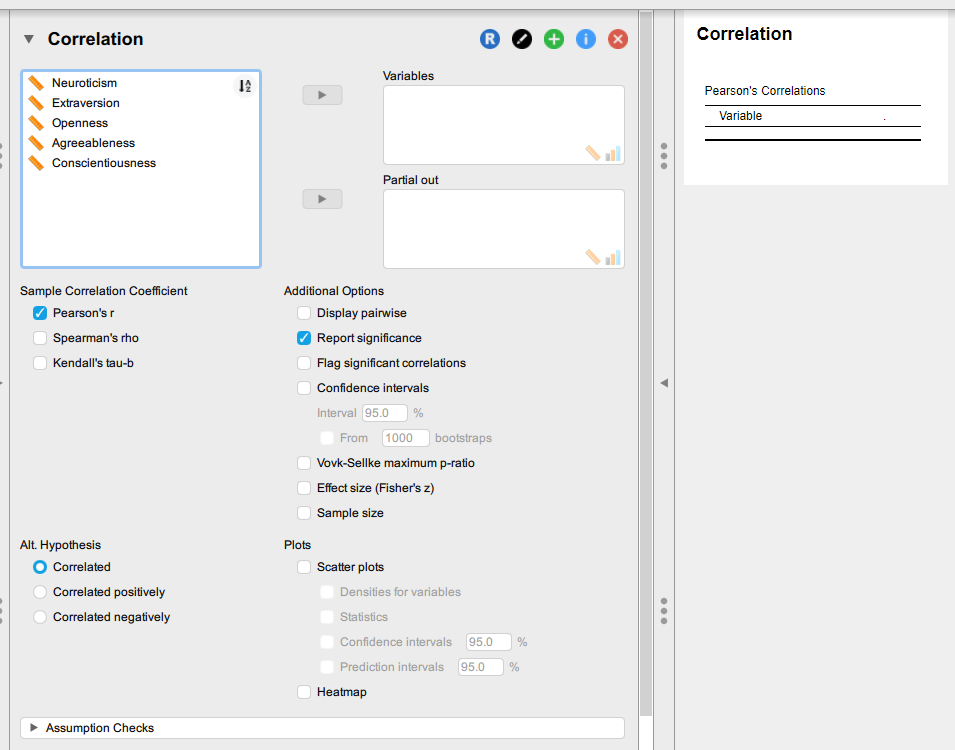
3. Move the variables for your analysis into the Variables box. You can move more than two variables into this box if you are conducting a multiple correlation. Do not worry about the ‘Partial out’ box at this stage.
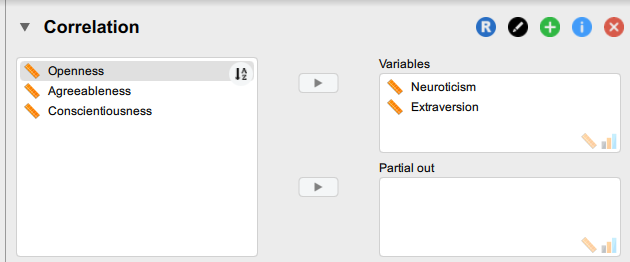
4. There are many options in the expandable menus for this type of analysis which can initially be overwhelming. However, it is unlikely that you will need all of them. Here are some of the options which you are likely to use:
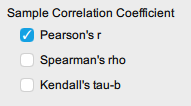
Sample Correlation Coefficient. Pearson’s r is selected as the default as this is the parametric test. If the assumption of normality is violated, then you would usually use Spearman’s rho.
Alt. Hypothesis. The default is ‘Correlated’ and signifies the null hypothesis which is what you should use most of the time. The two directional hypotheses are the other two options.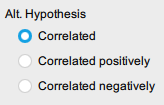
Additional Options. These provide you with additional information about your results. Unless instructed otherwise, it’s usually a good idea to generate the following additional statistics: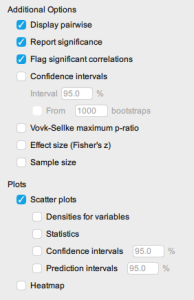
-
-
-
- Display pairwise – this is useful for ‘simple’ (i.e., with only two variable) correlations as the output is a single line, rather than a correlation matrix.
- Report significance – because you want the p value!
- Flag significant correlations – this is useful, particularly when you have a number of correlations in a matrix.
-
-
Plots. Select ‘Scatter plots’ to visualise the data.
Spearman’s rho
How do I do that?
1. The only change you make from the previous instruction is to select Spearman’s rho.
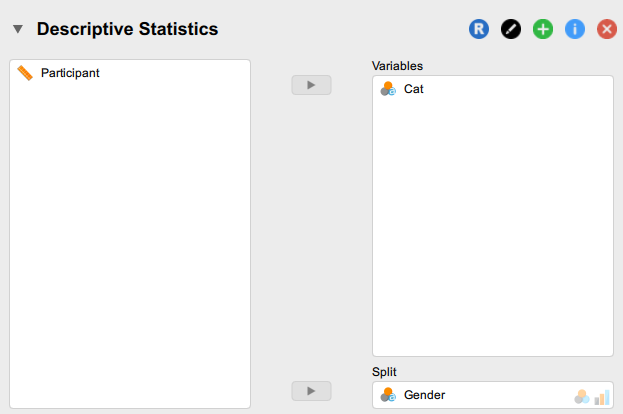

2. All other menu selections are the same.

